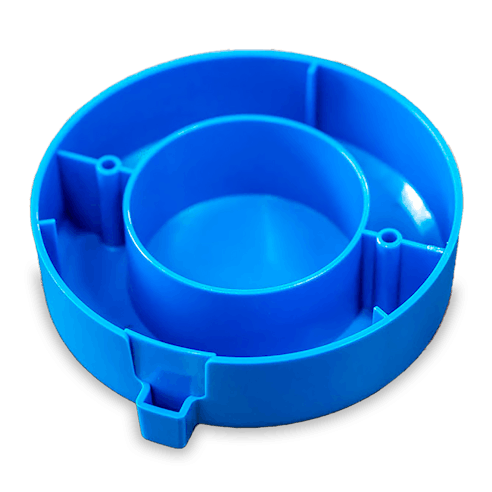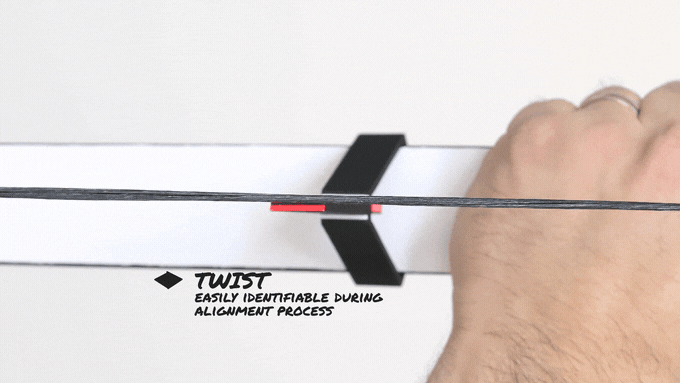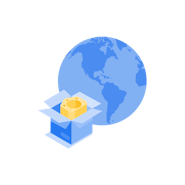Prototype Injection Molding Service
Validate your product with fast, production-quality parts | Low-cost tooling, dozens of materials and finishes | International prototype pricing includes tariffs | Auto-quoted estimates for prototypes
Prototype Molding Service With Xometry
Our prototype molding services can help you bridge the gap between initial prototypes and help validate your product for complete production runs. Take advantage of all the technologies, materials, and finishing options Xometry offers within our plastic injection molding services to get the same quality of parts you can expect from a total production run. The price for your molded prototypes includes tariffs to simplify your procurement process.
Our project managers and engineers will work closely with you to understand your project's unique requirements and help you make informed decisions to optimize for the lowest costs and fastest lead times. To get started, simply upload your 3D CAD file to the Xometry Instant Quoting Engine®. Most projects qualify for an auto-quoted estimate, allowing you to budget and plan your project accordingly without waiting for responses. Once you're ready, submit your request for review, and our team will work with you closely at every step!
Why Start With Prototype Injection Molding?
Sometimes it can be challenging to determine whether or not you should start with Prototype Molding or jump straight into Production Molding. Xometry understands every project is unique, and our experts will work with you to make an informed decision. There are a few characteristics that Prototype Molding may be best suited for:
- Low-cost Tooling: Optimized for smaller runs with affordable materials and simple tool design.
- Fast: Get parts in hand in as few as 5 business days!
- Limited Volume: Ideal for projects where a limited run of high-quality parts is needed.
- Break-Even Costs: Match or beat the per-part cost of other rapid prototyping processes, like 3D printing.
- Product Validation: Gain confidence in your design before committing to expensive production-level tooling.


Case Study: An Archer Aims, Shoots, and Lands His Shot with Xometry Injection Molding
Prototype Injection Molding Considerations
A few key aspects should be considered when considering a prototype mold. The table below may help you determine whether your injection molding project is suitable for prototype tooling or if you need to explore higher-tier options such as our Bridge or Production Tooling services.
| Subject | Consideration |
|---|---|
Subject Tool Life | Consideration Prototype tooling is made of softer materials and thus will wear out sooner. |
Subject Mold Texturing & Polishing | Consideration Finishes on prototype tools wear quickly, offering low value for the cost. B to D SPI finishes are recommended on this type of tooling. |
Subject Gating Methods | Consideration Gates may be constrained to edge, direct & fan techniques. Bridge or Production tooling supports more advanced methods. |
Subject Mold Classes | Consideration Class 105 and 104 molds are most common with prototyping molding runs. Higher class molds are typically reserved for our higher-volume molding services. |
Subject Material Selection | Consideration All injection molding materials we offer are available for prototype molding. Abrasive materials (e.g., glass-filled) may lower the life of a prototype tool. |
Subject Tool Origin | Consideration Xometry offers both domestic (USA) and international molding options. Mold ownership stays with the customer regardless of its origin. |
Ready to start a molding project?
Why Choose Xometry for Prototype Tooling?

Endless Options
Choose from millions of possible combinations of materials, finishes, tolerances, markings, and certifications for your order.

Expert Help
Our experts help get your parts delivered right to your door without the hassle of sourcing, project management, logistics, or shipping.

Vetted Network
We are ISO 9001:2015, ISO 13485, IATF 16949, and AS9100D certified. Only the top shops that apply to become suppliers pass our qualification process.
Instant Pricing and Lead Time Estimates
Streamline your budgeting and procurement process with the Xometry Instant Quoting Engine®. Upload your 3D CAD files to receive an auto-quoted estimate for pricing and lead times, allowing you to plan your project without the typical delays of waiting for a manual quote. This powerful tool saves you valuable time by providing the information you need up front. When you’re ready to move forward, our team of experts will thoroughly review your project to confirm and finalize your quote and provide consultation to ensure your project is set up for success.

Injection Molding FAQ
What industries use injection molding?
Injection molding is used across various industries, including aerospace, medical devices, consumer goods, energy, electronics, automotive, robotics, toys, and more.
Why would I prototype with injection molding rather than 3D printing?
3D printing is an excellent process for rapid prototyping! However, prototyping with injection molding enables a much more comprehensive range of materials, finishes, and textures that other processes do not offer. Prototyping with injection molding also paves the way for potential full-scale production in the future. You can iterate and tune the design to fit the same process used for production quantities. Many customers do initial prototyping using 3D printing, but later move on to injection molding when preparing to scale production and bring their creation to its final vision.
What are mold classes?
The SPI (Society of Plastic Engineers) developed mold classifications to standardize mold type definitions based on mold material, tool design, features, and production volume. Mold classes range from 101 (most advanced, highest volume production) to 105 (prototyping applications) to simplify the type of injection mold required for thermoplastic molding based on production needs. Mold classes are intended to be used as a guideline.
What is MUD tooling?
A MUD (Master Unit Die) is a type of mold that uses a standard injection molding frame that utilizes inserts that define the shape of the internal cavity and thus the eventual part. Think of it as a quick-change system akin to swapping out the head of a disposable razor. Ultimately this type of tool helps drive lower-cost and lead time as most of the machining time will be focused on the core and cavity work, rather than all other aspects of a more complicated tooling setup. MUD tooling is often used with prototype molding applications. Learn more about injection molding tooling and processes.
What are lead times like with prototype injection molding?
Xometry can typically deliver a prototype injection mold component within 3 weeks. Depending on your project's specific requirements, we can deliver in as few as 5 business days!
What materials are available for prototype molding?
All of our usual injection molding material offerings are available for prototype molding! Read more about choosing the right injection molded plastic.
Can you run different colors of the same material?
Yes, multiple colors can be run even on the same order! When running multiple colors on the same order, a purge charge will be added.
What is the process after ordering?
After receiving the order, the statement of work is reviewed by one of our manufacturing engineers. A case manager is assigned, and an appropriate manufacturing supplier is identified. A comprehensive DFM/PEG report is created and provided for approval. Upon approval, tooling and mold production is commenced. T1 samples are produced and shipped for approval. Upon approval, the remaining parts are made.
Will I need to pay tariffs on internationally produced parts?
Xometry's checkout price for internationally produced prototypes— originals or models of parts intended exclusively for non-commercial purposes— shipped to the US includes tariffs. You can learn more by reading our article on understanding international shipping costs.
